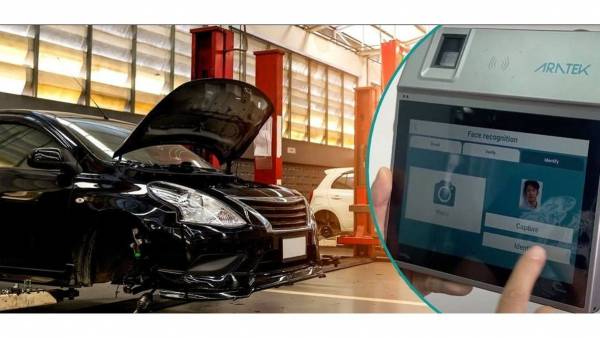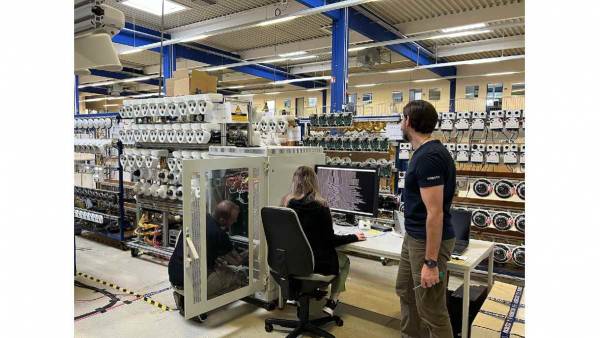 The calculation of the bandwidth (BW, for its acronym in English: Band Width) of a communications channel to transmit video, is done with simple mathematical calculations, which here we will learn easily.
The calculation of the bandwidth (BW, for its acronym in English: Band Width) of a communications channel to transmit video, is done with simple mathematical calculations, which here we will learn easily.
By Germán Alexis Cortés H.
We must rely on information provided by manufacturers and on aspects that must be defined according to our experience and the needs of the end user. But here is an added value, it turns out that the BW is closely related to the capacity of the hard drive (HD, for its acronym in English: Hard Drive, or DD in Spanish), where the video information is stored.
Therefore much of the data we require to determine the BW is necessary to know the capacity of the DD. Then dear reader, I tell you that reading this article, you can have the clear bases to know how the DD of your video surveillance system is calculated in a professional way, a topic that we will deal with on another occasion.
Let's start with some very, very basic but key concepts for us to speak the same language:
* Bandwidth is measured in bps (bits per second) – Unit of digital speed. Hard Drive capacity is measured in Bytes – Digital Storage Drive.
* Remember that a bit is equal to one-eighth of a Byte. From the other point of view, a Byte is equal to 8 bits. (Please note which bit is written with a lowercase b and which byte is written with a capital B, to differentiate the two units.)
* The notations of K (Kilo), M (Mega), G (Giga), T (Tera), P (Peta), Z (Zeta)... are used to determine thousands, millions, billions and so on, therefore KB will express Kilo Bytes, or thousands of Bytes; while Gbps will mean billions of bits per second.
* We must bear in mind that as they are binary notations, a K is 1024 and not 1000 as in the decimal system. Equal to one M are 1024 K; o T is 1024 G. This is useful for moving from one unit to another.
Bandwidth
Bandwidth represents the speed of a transmission channel, however it is really the amount of information that can be transmitted in a second of time by that means of communication. This depends on the ability to handle bits (ones and zeros) very efficiently and the speed of electronic circuits to manage this information in an organized and secure manner.
Many people believe that a 2MHertz channel (frequency measurement in the electromagnetic spectrum) has a bandwidth of 2Mbps, but that's not necessarily true. I insist, it depends on electronic circuits and the expertise of hardware, firmware and software, to better manage information.
Nowadays, almost always the transmission algorithms on the one hand and the control characters of the protocol to be used, subtract and add bits and then the ratio between the frequency of the carrier wave or the basic clock and the bandwidth is not direct.
Here we can define two types of speeds of data transmission channels: The Nominal, which is always greater than the Effective. The latter is the one that really interests us, because it determines the REAL amount of data that the channel is transmitting, while the first one determines the maximum speed but maintains associated control characters that do not contribute anything real to the message, obviously they are necessary to give security and reliability to the channel.
Additionally, it can handle collisions, failures, errors and losses that ultimately substantially reduce the "Effective" speed of the communication channel.
There is no formula to determine the effective speed of the nominal, however for our case (video transmission) we can assume that the effective speed is only 40% of the nominal speed in the vast majority of cases in LAN/WAN type data networks.
Let's look at an example: When someone tells us that the local network (LAN) of our office is 100BaseT, they are telling us that it is based on twisted pair or UTP cable and that the nominal speed of the network is 100Mbps. So over there we can't expect them to actually travel more than 100 x 40% = 40 Mbps.
If for example we have determined (later we will see) that a camera requires 2 Mbps, then we can not place in that network more than: 40Mbps / 2 Mbps = 20 cameras. It's that simple.
Similarly if the speed of my internet link is 6Mbps nominal, then effective I have 6 x 40% = 2.4 Mbps, therefore that link reaches me for only one of the previous cameras.
I must design and work, in this way (scenarios and more critical situations), to ensure that I will always be able to transmit by the aforementioned means of communication, that video signal and that it will never suffer delays, low quality or decrease in speed (frames per second).
Required parameters
Let's review the following bandwidth formula, expressed in bps: BW = Speed x Average image size x % activity x 8
We will explain each variable, for them it is required to define several aspects in a digital video camera:
Speed of images:
Number of frames, expressed in frames per second (FPS). Which are the number of frames I want to stream to view on the remote site. The American NTSC standard defined this value at 30 FPS, however the human eye can easily see at speeds of 24 FPS without discomfort. The less FPS you transmit, the less information you send, the lower the dynamic resolution you get, and ultimately you run the risk of not seeing the precise moment you need.
Special note: At this point, I consider it my duty, to remember that although it seems very funny and never given the necessary attention, there is Murphy's Law ... and that in electronic security the chapter is very, very long... . Therefore simply NOT of the opportunity for things to go wrong, or as my Fellow Colombians say, "not of papaya". (I clarify that this is not rudeness or foul word, it is simply the name of a fruit. It is a word widely used in the land of the best coffee in the world, which some consider the eleventh commandment to live well). Then please: Don't risk losing the perfect image of the illicit or the sinister, simply because you reduced the speed of transmission... to save some money.
Size of each image on average:
It is expressed in Bytes. It depends on the manufacturer of the device that sends the signals over the network, (It can be a DVR, or an NVR, or an encoder, or a video server or a network or IP camera, among other devices).
It depends on the compression algorithm that is being used, it also depends on the static resolution of the video image that we want to send and depends on the scene that is being observed.
As you can see, the size of each image depends on many things that vary constantly, therefore we always talk about an average size... for certain circumstances. I don't want to make a treatise at this point to explain static and dynamic resolution, compression algorithms, color theory, subsampling and so on... I assume that they are concepts that are part of other editions in Canal de Seguridad and that you, an investigative reader, will know how to find.
Then it is the manufacturer who must guide us on the average size in Bytes of a traditional frame. Many times we find tables where they indicate resolution and quality parameters versus algorithms used. On other occasions manufacturers have calculators on their websites, which allow them to find out this data very accurately depending on the parameters.
Resolution:
Obviously, the higher the static resolution of the image to be transmitted, the larger the average size of each frame, regardless of the compression algorithm. In this regard, it is worth remembering that it should be transmitted and stored in the best possible static resolution, preferably at least the native resolution that the camera can offer.
For example, if it is a camera of 520 TVL, with IP output that offers us without cropping or readjusting the size of the image a digital resolution D1, of 720x480 pixels, it is precisely at that resolution that we must store it and send it to get the best out of it.
In the analog world it is normal to see that cameras can give a fairly high native digital resolution and yet reduce them to a VGA format (4 CIF) that is 640x480 or similar, negligently losing valuable information that improves the sharpness of the signal.
Compression Algorithms:
We must understand that manufacturers are currently competing for the best algorithms and compression formats. At this time we could mention 4 of generic type: JPEG, of good quality, but with little level of compression. MPEG-2 of excellent quality but very low level of compression.
MPEG4 Layer 2, of good quality and good level of compression, is the most used worldwide. And finally the MPEG4 Layer 10, better known as H.264, of good quality and excellent level of compression. However, there are many others of a private nature (owner) that make the most of the various trends and research. Finally it does not matter which format is used, the important thing is to compress a video to its maximum expression, without sacrificing much the quality that the human eye can appreciate.
Scene Type:
In this case, the average size of each frame is constantly changing depending on how complex, bright, or colorful the scene that forms the digital image. The more colorful there is, the more the size increases, the darker the scene, the more it increases, the more edges and color changes there are, the larger the average size.
If we see a single frame, we will notice that the size changes are small (5-10%) however when we add these changes at the level of objects and layers in the algorithms of the Wavelet, MPEGx and H26x families, we will realize that the results are very different. In this case, the tolerance factor or average margin of error that each manufacturer gives us is where it takes importance.
* Germán Alexis Cortés H. is a Colombian Electronic Engineer, with a postgraduate degree in Engineering Management Systems. Consultant of the National Institute of Standards and Technology – NIST, in Electronic Security and Building Automation. CCP of ASIS, and CISSP of ISC2. He has over 20 years of experience in the electronic security industry. Renowned lecturer and university professor on high-tech issues at the Latino level. He has been a director of several companies in the sector and is currently a partner and directs Insetrón Ltda, an engineering and technical consulting company in electronic network projects for security, communications and automation. He has successfully participated in more than 150 projects at the Latino level.

























Leave your comment